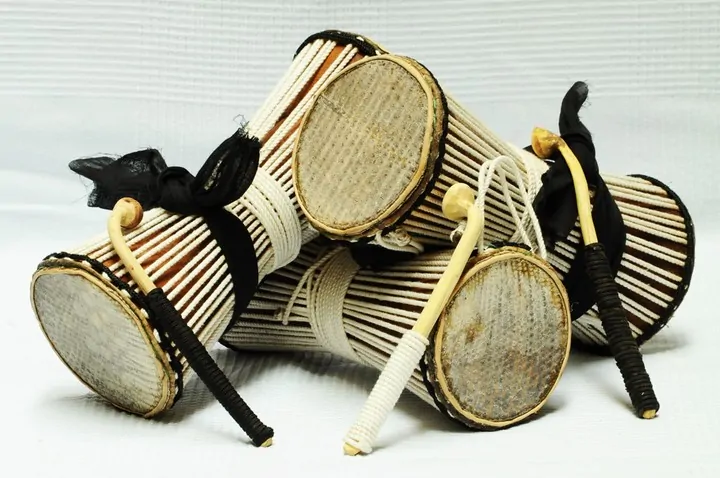When you hear the beat of a talking drum, gangan or dùndún—something stirs inside you. Whether it’s at a traditional wedding, a Yoruba movie, or even in a Burna Boy song, there’s just something about that sound that grabs your attention. It’s not just a beat; it’s a message. Literally.
But wait! what exactly is a talking drum? Where did it come from? And how can a drum talk, sef?
Let’s take a fun, culture-rich dive into one of Nigeria’s most iconic musical instruments: the talking drum. We’ll explore its origin, cultural uses, spiritual significance, and even how it’s being remixed in today’s music scene.
A Quick Origin Story – Straight from the Motherland
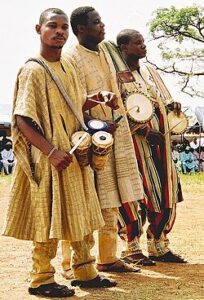
The talking drum is deeply rooted in West African culture, especially among the Yoruba people of Nigeria. It dates back centuries, even before colonialism, when our ancestors used it not just for music, but also for communication.
Yes, the drum was basically the original WhatsApp. Villages used it to send messages across distances, announce births, funerals, wars, or royal visits. Before loudspeakers or Twitter threads, there was dùndún.
It’s called a “talking drum” because it mimics the tone and rhythm of human speech, especially tonal languages like Yoruba, where the way a word sounds can completely change its meaning. The drum’s pitch can be adjusted using tension cords, allowing the drummer to “speak” through beats. Wild, right?
What Does It Look Like?
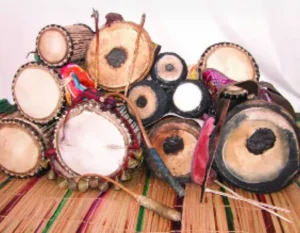
The most popular talking drum in Nigeria is the gangan. It’s hourglass-shaped and usually played with a curved stick. The drummer tucks it under their arm and squeezes the cords to tighten or loosen the drum’s surface, which changes the pitch—just like how you change your voice when whispering, shouting, or throwing shade.
There are other versions too:
- Dùndún – Bigger than gangan, more bass.
- Ìyá Ìlù – Literally “mother of drums,” the lead drum in the set.
- Kẹríkẹrì – Smaller and used for faster, high-pitched rhythms.
Each one plays a role in creating rhythm, emotion, and gist. Together, they’re like a full squad of hype men!
The Drum That Talks Culture
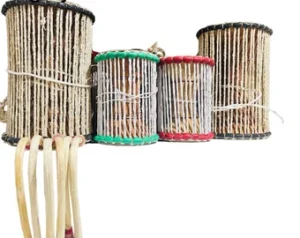
In Yoruba culture, talking drums are not just for vibes, they are loaded with meaning.
- At weddings, they hype the couple, praise their families, and set the mood for joy.
- At naming ceremonies, the drum can chant the baby’s lineage and destiny.
- At funerals, it sends off the dead with dignity, sometimes even mimicking the person’s name or achievements.
- At festivals, it becomes a messenger between the living and the ancestors or orishas (gods).
A skilled drummer can use the drum to praise a king, scold someone, or even flirt. Yup, Yoruba men weren’t always sliding into DMs—some were shooting their shot through drum beats.
It’s More Than Just Music—It’s a Language
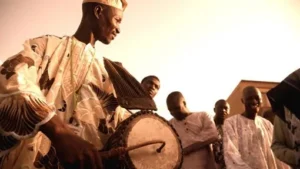
One of the coolest things about the talking drum is that it literally speaks. Expert drummers can play proverbs, poetry, greetings, and even insults, using only rhythm and tone.
Example? If you hear: “Ẹ káàárọ̀ o” (Good morning) A seasoned drummer can tap that exact phrase on the drum, and a Yoruba speaker nearby will understand it instantly. That’s because the drum is mimicking the tonal inflections of the words.
It’s like Morse code, but make it Afro.
In Today’s World – Still Talking, Still Trending
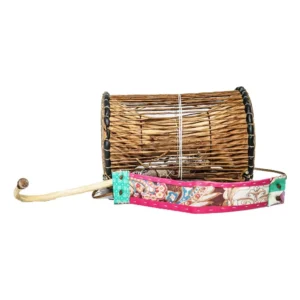
You might think this is old school stuff, but guess what? Talking drums are very much alive and are making waves globally.
- Burna Boy, Wizkid, and Davido have all used talking drum beats in their songs.
- Fela Kuti made the dùndún a key part of his Afrobeat legacy.
- Touring Yoruba drummers now perform internationally, teaching workshops and collaborating with jazz, pop, and hip-hop artists abroad.
- Even Hollywood soundtracks are borrowing that talking drum flavour for that authentic African spice.
So yes, this “vintage” instrument is still setting trends and telling stories—even on the world stage.
Why You Should Care (Even if You Don’t Play Drums)
We live in a digital age, true. But knowing your culture isn’t old school—it’s powerful. The talking drum reminds us that our ancestors had knowledge and creativity that still amazes scientists and musicians today.
It teaches:
- Communication – In a world of noise, precision and tone still matter.
- Respect for tradition – Drumming is spiritual, sacred, and serious.
- Creativity – From messaging to music, the talking drum is proof that you can innovate with anything—even goat skin and wood.
Plus, the sound is just fire. If you’ve ever danced to a live band with a talking drum, you know there’s nothing like it. You can literally feel your heartbeat syncing to the rhythm.
Final Beats
The talking drum is not just a musical instrument—it’s a storyteller, a cultural archive, and a symbol of who we are. From the villages of ancient Oyo to the world’s biggest music stages, this humble drum has refused to stay silent.
So next time you hear its rhythm, pay attention—it might just be saying something.
Fun Fact:
The Yoruba phrase “ilù kì í sùn” means “the drum doesn’t sleep.” And truly, even centuries later, it’s still wide awake, loud, proud, and very much talking.

